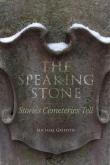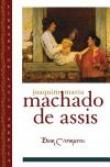The title of Michael Griffith’s wonderful new nonfiction book – “The Speaking Stone: Stories Cemeteries Tell” – is misleading.
Cemeteries are silent. It takes a curious mind to find the glimmering pulse in the dusky dead past and a gifted writer to make it breathe and sing.
Griffith accomplishes all that and more as he explores the richness, the wonders and mysteries of life at his local graveyard.
His muse is Cincinnati’s Spring Grove Cemetery and Arboretum, which is America’s third-largest cemetery. There he finds dozens of promising names to raise from the memory hole, revealing fascinating pockets of the past in crisp chapters. They include a spiritual medium who inspired the Magic 8-Ball, the boat pilot who ferried escaped slave Dred Scott to freedom; the inventor of the glass door oven (so you can see what you’re baking); the man who helped design the limousine JFK was riding in when he was assassinated in Dallas.
 One of the most fascinating figures Griffith profiles is the feminist icon and freethinker Fanny Wright (1795-1852) whose life of accomplishment included the creation of a utopian community called Nashoba, which aimed to provide a model for abolishing slavery by purchasing and then freeing enslaved people who would prove their equality through being given the chance to live as equals – including the right to marry those of other races. When it was clear that her experiment would fail Wright chartered a boat and accompanied thirteen formerly enslaved persons and their eighteen children to Haiti.
One of the most fascinating figures Griffith profiles is the feminist icon and freethinker Fanny Wright (1795-1852) whose life of accomplishment included the creation of a utopian community called Nashoba, which aimed to provide a model for abolishing slavery by purchasing and then freeing enslaved people who would prove their equality through being given the chance to live as equals – including the right to marry those of other races. When it was clear that her experiment would fail Wright chartered a boat and accompanied thirteen formerly enslaved persons and their eighteen children to Haiti.
Amidst these sketches, Griffith provides delightful historical details about the city long known as Porkopolis – its port along the Ohio River helped it become a chief pork-producing town during the 19th century). Many of the stories he tells involve alcohol. During the 1880s, the city had one tavern for every 37 inhabitants which may have been necessary as the per capita consumption of beer based on the adult male population was about 100 gallons, “more than a thousand twelve-ounce beers per man per annum.”
Griffith’s reckoning with the lives of others is, of course, also a memoir of sorts and a meditation on writing. He explains:
“But what I like best about obituaries, as about most of the fiction I love, are not the plot elements (feats and honors, in this case) but the pungent odd ties that peek up between and around them: quotations, anecdotes, details offered as synecdoches for a whole life. These are the elements that give the reader, having invested just two or three minutes, something of a person’s tone arid timbre. Obituaries are miniatures that, in the hands of a sly, resourceful, above all empathetic writer, don’t just transcend the form’s limitations but are in some basic way about showing how obnoxious and deficient linearity is as a way of viewing a life. They give a useful reminder: the real life lies between the lines. … when we take the jump into apparent randomness it’s not fate that delivers us; it’s narrative. There’s nothing we can’t make into a story. There’s nothing that isn’t already one."
As he rambles through the graveyard, he asks what does it all mean?, a question he answers with glowing wisdom: “Were temporary, yet, we flit and fret and fail within the flow of something like permanence. How to balance our needs and our values, the now and the later, the imperatives of biology and of morality? … We mark our fleetingness with something durable; it’s a gesture of defiance and surrender at the same time. But we cannot control what the relict of our time on earth will be. What of us will land in newspaper archives, obituaries, anecdotes, the fading or unreliable memories of friends and spouses, the long, whispered game of telephone that is posterity? Who will be left to mourn us, or to celebrate us, or to defend the tatters of our (the very word seems absurd) honor? Flesh decomposes, memory fails, archives burn or molder. We are gradually reduced to the stories about us that seem most sordid or entertaining or quirky ….”
- Read an excerpt from The Speaking Stone
- Watch Michael discuss the book
Michael Griffith’s Top Ten List
1. Pale Fire by Vladimir Nabokov (1962).
2. Bleak House by Charles Dickens (1853).
3. One Hundred Years of Solitude by Gabriel García Márquez (1967).
4. Lolita by Vladimir Nabokov (1955).
5. Madame Bovary by Gustave Flaubert (1857).
6. The Tin Drum by Günter Grass (1959).
7. Dom Casmurro by Joaquim Maria Machado de Assis (1899).
8. Mrs. Dalloway by Virginia Woolf (1925).
9. Middlemarch by George Eliot (1871–72).
10. Outer Dark by Cormac McCarthy (1968).
Appreciation of Joaquim Maria Machado de Assis’s Dom Casmurro by Michael Griffith
In 1878, nearing forty and afflicted by epilepsy and rickets, Machado, a successful but conventional Brazilian romancier, withdrew from Rio to convalesce. He returned not only rejuvenated but transformed; in coming decades he would write, among other works, three classic novels: The Posthumous Memoirs of Brás Cubas, Philosopher or Dog?, and Dom Casmurro.
 Dom Casmurro (“Lord Taciturn”) is Bento Santiago, an affluent old man undone by jealousy. He believes that his wife, Capitu, betrayed him; his friend Escobar must be the real sire of Bento’s son. Yet what’s most remarkable here is not the story but the storytelling. There’s its fragmented form (148 chapters in scarcely 250 pages); there’s Machado’s mixture of scathing satire with empathy for his narrator, whose autobiography is part legal brief, part cri de coeur, part special pleading, even (covertly, poignantly) part mea culpa. But Machado’s signal feat is his pioneering handling of unreliable narration.
Dom Casmurro (“Lord Taciturn”) is Bento Santiago, an affluent old man undone by jealousy. He believes that his wife, Capitu, betrayed him; his friend Escobar must be the real sire of Bento’s son. Yet what’s most remarkable here is not the story but the storytelling. There’s its fragmented form (148 chapters in scarcely 250 pages); there’s Machado’s mixture of scathing satire with empathy for his narrator, whose autobiography is part legal brief, part cri de coeur, part special pleading, even (covertly, poignantly) part mea culpa. But Machado’s signal feat is his pioneering handling of unreliable narration.
Though Bento prosecutes his case zealously, his evidence boils down to the oft-repeated fact that Capitu has “eyes like the tide.” Bento may be deluded, even reprehensible, but we are not allowed to laugh at him, to think ourselves superior. He’s like us. And if every narrator is subject to similar blindness and self-pity, how to trust anyone? The question would loom large in twentieth-century literature.
The reader, too, is implicated. Bento writes, “[E]verything is to be found outside a book that has gaps, gentle reader. This is the way I fill in other men’s lacunae; in the same way you may fill in mine.” Reader, jury, do with me what you will. Machado admits into his text radical postmodern ambiguity, years before its heyday, for what book does not have gaps, is not made up of gaps?
Allusive, psychologically penetrating, politically charged, darkly funny, Dom Casmurro links Sterne to Barthelme, Flaubert to Nabokov, and remains startlingly fresh.